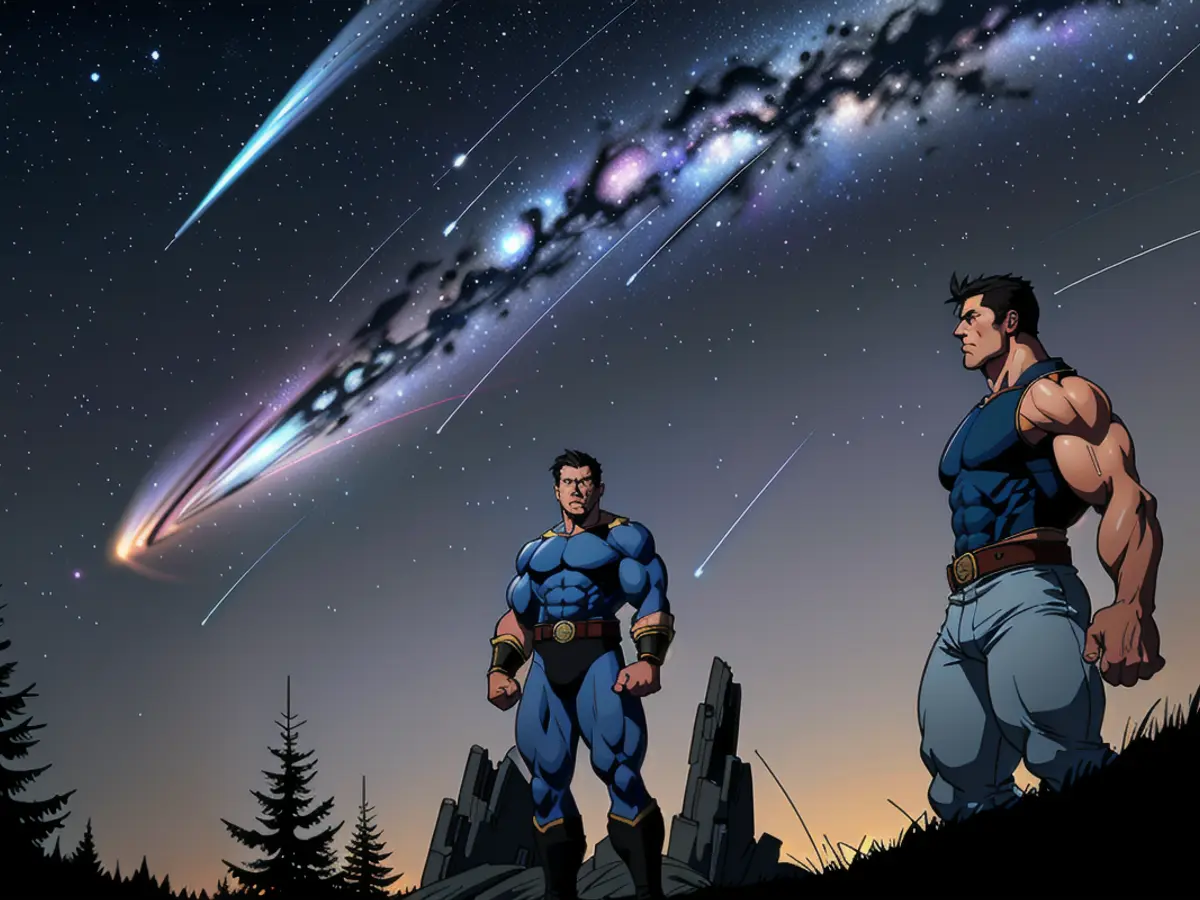Observe "Shooting Stars" During Solstice as Ursid Meteor Shower Reaches its Peak over the Weekend.
The closest meteor shower close to winter holidays, known as the Ursids, follows closely after the Geminid meteor shower around late December annually. Despite not being the most impressive show of the year, boasting approximately 10 shooting stars every hour, it's worth noting that in 2024, it reaches its peak just hours after the winter solstice in the northern hemisphere on December 21, Saturday.
Referred to as bright comets, if you spot a shooting star during this period, it's likely an Ursid.
Here's a comprehensive rundown on the 2024 Ursid meteor shower:
What Exactly Is the Ursid Meteor Shower?
In essence, when you witness a shooting star, all you're actually observing is a minuscule particle smashing into Earth's atmosphere, resulting in a brief glow as it heats up. These trace elements of dust and debris are remnants left behind by comets during their orbit around the sun. The Ursid meteor shower is triggered by Earth colliding with debris littered by Comet 8P/Tuttle, first discovered in 1790. Comet Tuttle last graced the solar system in 2008 and will return in 2021.
Approximately 5–10 Ursids per hour can be observed near peak, with occasional outbursts resulting in over 25 shooting stars per hour, as stated by the American Meteor Society.
When to Catch the Ursid Meteor Shower?
Despite the Ursid meteor shower spanning from December 13-24, Comet Tuttle produces a narrow stream of particles. To catch an Ursid meteor, ensure that you observe it as close to its peak as possible. In 2024, it's suggested viewing on Saturday, December 21, late into the night and early into Sunday, December 22. Favorable observing conditions prevail this year, with the waning gibbous moon not rising until midnight.
Where to Spot the Ursid Meteor Shower?
Now, for those in the northern hemisphere, this is an exclusive meteor shower associated with the Ursa Minor constellation, commonly recognized as the Little Bear or the Little Dipper. The "shooting stars" produced by the Ursid meteor shower appear to radiate from around Ursa Minor's star Kochab. The Ursids will appear closest to this star.
The final star in the Little Dipper's tail is Polaris, though not exceptionally bright, has a special significance for stargazers. As Earth's northern axis aligns with Polaris, it appears directly above the North Pole, referred to as the North Star.
Consequently, the Ursids can only be observed in the northern hemisphere, as Polaris cannot be spotted by anyone south of the equator.
Shooting stars from the Ursa Major meteor shower can be seen anywhere in the sky, so no elaborate steps are necessary to witness one aside from hunting down a dark night sky devoid of light pollution.
Happy sky-gazing!
During the Ursid meteor shower, if you spot a shining streak in the night sky, it's likely a Ursid meteor, as these 'shooting stars' are caused by tiny celestial particles colliding with Earth's atmosphere, originating from debris left behind by Comet 8P/Tuttle. The Ursid meteor shower is best observed near its peak, which in 2024 falls on December 21, Saturday, in the northern hemisphere, where this meteor shower is unique and can be viewed closest to the Ursa Minor constellation, specifically around the star Kochab.






